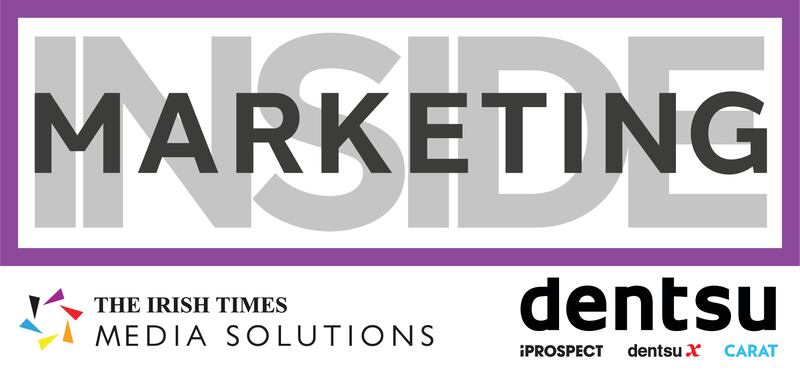When you spend any time working in the world of marketing and tech, you’ll find yourself bombarded with buzzwords, new catchphrases, fads and trends that speed through your life. Some of the trends are important, but many don’t matter. Some are the same idea you’ve seen or heard many times before — they just arrive into your day dressed differently.
The future of advertising technology (aka adtech) is much-debated. For an industry well into its third decade and fifth iteration, however, that future isn’t too far away. Trends come and go in the blink of an eye and — depending on the day or week — devices, formats, data, targeting, privacy, identities, locations, measurements and/or attributions could all be hot topics. There is, however, one significant trend we can’t ignore, and that is automation.
Automation has been around for decades in the world of financial trading, but it also drives our daily lives through smartphones, kitchen appliances, food we eat, cars we travel in, money we spend and so on. Oddly enough, it is only in recent years that the world of marketing and advertising has begun to take on the idea and use of automation.
[More Inside Marketing]
In essence, automation is mostly what people mean when they talk about digital transformation. It can be one of two things: it can optimise processes by driving greater efficiencies and/or it can add intelligence to the decisions we make.
Marty Morrissey gets an A+ in new football rules, even if some pundits aren’t yet sold
Breda O’Brien: Nicole Kidman’s Babygirl isn’t the ‘hottest film this year’. It might be among the most depressing
High noon for developer Paddy Kelly, who faces run-in with the sheriff over unpaid rent arrears
Pat Leahy: Angry Dáil scenes were partly the result of Sinn Féin’s determination to be a more aggressive Opposition
Automation (advertising and marketing tech) really only works when it’s combined with proper human ingenuity. So while adtech can be vastly beneficial in automating high-frequency trading (that is, bidding), setting campaign pacing, optimising campaign metrics, visualising data and detecting fraud, it won’t be so useful at building a great media plan, account management, setting up and running curated advertising marketplaces, tagging/naming conventions, forging data partnership and integrations, and reporting.
Marketing and advertising automation can be great at looking after the ‘daily’
Marketing and advertising automation can be great at looking after the “daily”, which gives you and the people who work with you more time and room to think about the “weekly” planning and the “monthly/yearly” strategy for sales success.
A key part of this automation is the execution piece, or programmatic advertising, which is the use of software to buy or sell digital ads. Real-time bidding (RTB) is the primary process used to trade on an ad-impression-by-ad-impression basis and is similar to financial markets. Originally designed to help publishers monetise their unsold inventory, the programmatic ecosystem has been the go-to destination for advertisers looking to find and target their audiences at scale and deliver tailored messaging.
These execution efficiencies will lead to more than $130 billion of global advertising spend being transacted programmatically in 2022. As in all large markets, however, there can be bad actors prowling, trying to take more than their share of the spoils.
The programmatic ecosystem and the adtech that powers it has all too often been an opaque collection of servers, platforms and unknowns. The rise of the initial ad exchanges more than a decade ago was driven by a tsunami of fraudulent ads as platforms were determined to show rapid growth to investors by any means necessary. Arbitrage (trading that manipulates the small differences in price between matching assets in two or more markets) soon became the biggest game in town, with players hijacking and reselling an ad on its way to an advertiser.
In extreme circumstances, the tech has been weaponised against society by companies such as Cambridge Analytica in collaboration with Facebook, or, more recently, in Texas by bounty hunters who have sent aggregated location data to law enforcement offices to report people who have visited abortion clinics.
All this is happening while the wider industry continues innovating and helping advertisers reach their target audience in as efficient a way as possible. However, the weaker elements of the programmatic ecosystem have meant a lot of the day-to-day efforts are spent navigating what is a series of highly complex infrastructures and protocols. In digital advertising, as in many areas of life, we are forced to use technology to overcome the challenges that technology has created.
Brands and media agencies have concluded that the best way to take their next step forward is to first take some smaller steps backwards
As a result, brands and media agencies have concluded that the best way to take their next step forward is to first take some smaller steps backwards. This has typically involved moving away from the troublesome programmatic exchanges and working towards more integrated relationships with their preferred publishing partners. Their goal is to take the trading efficiencies of the programmatic buying platforms and utilise them in a more direct, curated and transparent manner. Regulatory changes, spearheaded by the introduction of GDPR in 2018, along with technical evolution such as the depreciation of the third-party cookie, are accelerating the transition to this becoming the primary way of buying.
This is not a straightforward task, however, with legacy adtech platforms (designed and built to trade media across blind exchanges) needing to be hacked to deliver these direct integrations. Developing these relationships is a complex task and is mostly an inefficient manual process.

Moving forward, finding the balance between trading in a controlled manner and retaining automated workflow efficiencies will be the key differentiator. This is an integral part of our offering at Converge-Digital and a challenge we embrace daily on behalf of our clients. We refer to it as Intelligent Automation for Advertisers.
On the publisher side of the trade, some organisations are already preparing themselves for these new, closer relationships with their trading partners by themselves pulling back from the programmatic exchanges and launching their own offerings. Last year the Washington Post launched the dedicated buying platform Zeus, which gives media trades the ability to automate their campaigns across national, regional and local publisher sites in the US. ITV now automates the sale of its premium VOD service via its Planet V platform.
The big advantage to publishers that have launched these solutions is the end-to-end control and transparency they and their trading partners can now benefit from. At a simple level, it leads to more working media delivering stronger results and growth for all involved. These solutions automate not just the programmatic execution piece but also the planning, finance and reporting elements of all digital campaigns. Crucially, these publishers and their advertising clients have freed up resources to explore new technical and commercial opportunities.
No Irish publisher is yet offering such a solution, yet despite the smaller scale with the UK and US there is still plenty of scope to do so. Arguably, the limited number of players (approximately 30 publishers/publisher groups) makes it a simpler proposition to bring to market.
If you are working in the marketing and tech spaces today and wonder what the future might hold, look to the world of finance
Automation in TV seems a natural evolution, with the majority of TV buying soon set to become a hybrid of workflow and ad server execution. Also ready for automation is digital audio, currently a highly fragmented collection of “walled gardens”. Newspapers already have the scale along with the development and operational resources to build products similar to Zeus.
If you are working in the marketing and tech spaces today and wonder what the future might hold, look to the world of finance, an industry far more advanced in its application of machines and one that continues to grow its employment numbers with new products and innovations (including general fintech, crypto, new consumer banks and so on). The first stock was traded in 1611. By contrast, the first digital ad was served on the internet in 1994.
The past three decades-plus have seen huge developments in the industry and will continue to do so. As we soon head into the fourth decade of adtech, automation will play a more important role than ever. But before you use the machines to help you, it’s vital to create, explain, educate, and to sell your marketing/advertising service in the right way. Increasing use of machines can allow you to focus on the important stuff — real measures such as effectiveness, not the so-called vanity measures that abound. At Converge-Digital, we think of this as the power of positive measurement and are excited to see where we as a company and industry can take it.
Ian Maxwell is chief executive of Converge-Digital
Inside Marketing is a series brought to you by dentsu and Irish Times Media Solutions, exploring the issues and opportunities facing the world of media and marketing. For more information, visit irishtimes.com/insidemarketing













